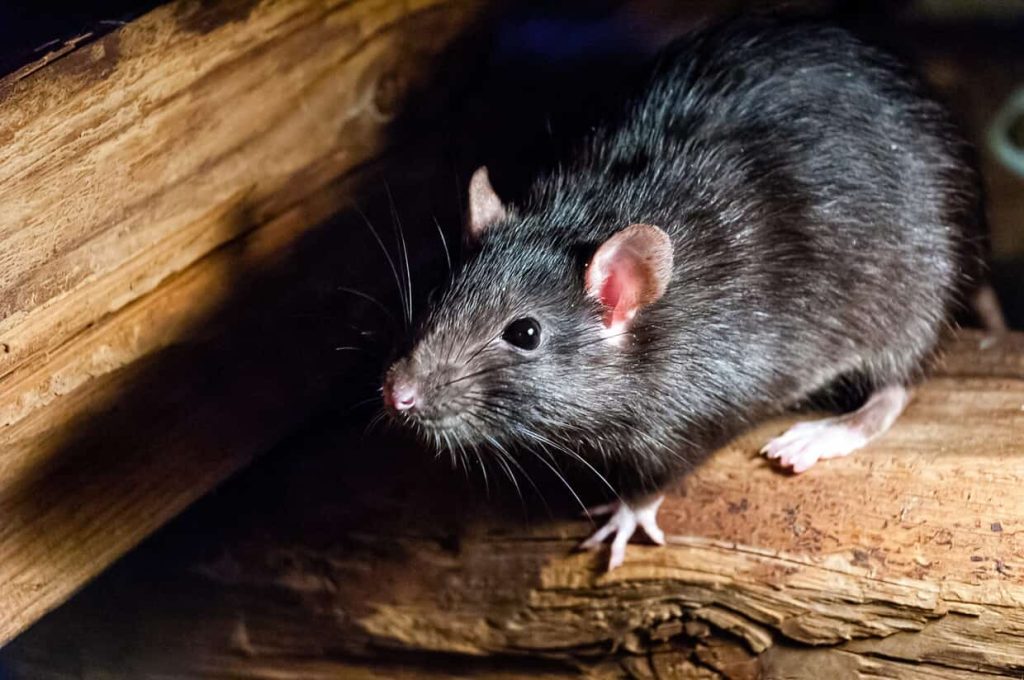
Arizona Roof Rats
Although roof rats are not native to Arizona, there has been increasing reports of these household pests. Some professional exterminators say they fall 3rd in line to bark scorpions and termites. The top 5 areas in the nation that roof rats are found include Gilbert and Tempe, Arizona. One reason for this is fruit trees, which provide food an water for roof rats. Roof rats can reside anywhere humans do. In a home, this usually means higher places such as attics, false ceilings and walls, or enclosed areas like pantries and cabinets.
Other names for roof rats (Rattus rattus) include black rat, ship rat or house rat. They are mainly light brown in color with a lighter underbelly. They weigh between 5 to 9 ounces and grow to a length of a 6” to 8” from nose to tail.
Roof rats are infamous for carrying and spreading disease such as jaundice, salmonellosis, leptospirosis, rat-bite fever, typhus and even the bubonic plague. Transmission is through bites, rat droppings, urine, scratches, or fleas that have been feeding on a rodent.
How Do You Determine if You Have a Roof Rat Infestation?
Know they are agile climbers and spend 90 percent of their time at least 4 feet off the ground. They usually travel between dusk and dawn and have a territorial area of 200 to 300 feet from their daytime nesting location. Roof rats are most active in cooler weather, generally between the November to May months in Arizona. They can gain access into your home by traveling up trees, brick, and stucco walls, and any points of entry. Roof rats can also access roof tops by traveling along power lines, fence lines, and from tree to tree. Did you know it only takes a hole ½ inch in diameter to give a roof rat access to your domain? It doesn’t take much.Signs of Rat Roofs
There are some telltale signs you may have a roof rat problem. Regularly inspecting for signs of roof rats can help you catch an infestation before it progresses into a serious problem.- Nighttime noises including scratching and gnawing in attics and walls
- You are finding hollowed out fruits, such as citrus
- Damage and gnaw marks to plastics, electrical wire housing, wood, dry wall, or aluminum siding
Roof Rat Prevention
Remove sources of food, water, and access to shelter. Denying them of these sources can help move them along to another area.- Keep your yard clean! Trim trees to keep branches away from your home and remove any vines from exterior walls. Pick up any rotten fruits or nuts that have fallen to the ground. Thin out bushes, thick scrubs, and prune fruit trees.
- Make sure sprinklers aren’t leaking, if they are, have them fixed.
- Do not leave feeds out where they can gain access to them, including dog and cat foods. Remember they can chew through containers.
- Search for holes in the exterior of your home and screen and seal, caulk or plug holes and vents into your home larger than ½ inch in diameter.
- Seal areas around washer and dryer vents, water heater pipes or any other areas that may allow access to the interior of your home.
- Make sure garbage is sealed and placed away from home.
What To Do if You Have Roof Rats
- Contact your Bug Guardian extermination expert at (480)345-2847.
- Do not touch the rodents or come in contact with the rat nest without gloves.
- Disinfecting the area once the roof rats have been removed is recommended.
